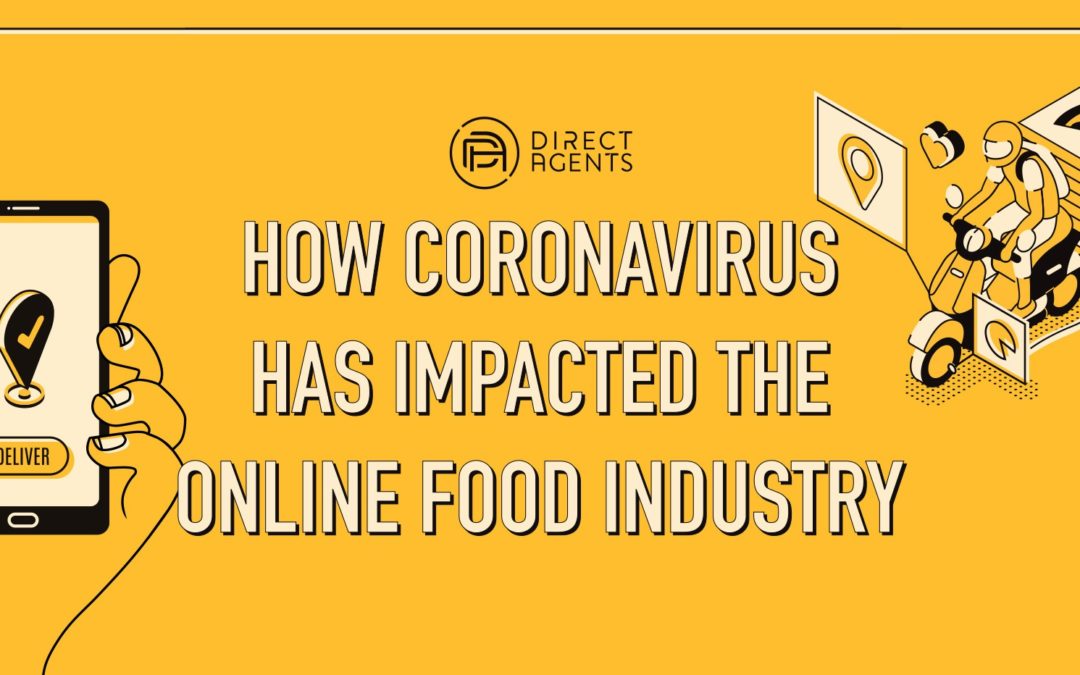While many industries have taken hard hits during the worldwide pandemic, there have been a few that have managed to maintain or even see growth during this unprecedented time. Looking at online shopping trends of consumers over the past few months has revealed some clear winners and losers based on traffic and search volume.
Of course, it goes almost without saying that travel and events industries have been some of the most negatively affected by the impacts of COVID-19, but others have been able to flourish. One of those industries that have seen positive search trends has been the online meal and grocery delivery industry.
Changes in Demand for Online Food Shopping
As government officials continue to impose stay-at-home measures, consumers are having to shift their consumption behavior- in this case, shifting toward more online food orders. Some consumers have simply replaced restaurant dining with meal delivery, using services like UberEats and DoorDash to deliver ready-to-eat meals.
Others have taken this time as an opportunity to spend more time cooking at home- whether that be by using recipe delivery services such as Blue Apron, or by having food groceries from services such as AmazonFresh delivered to their homes so they can make that next trending pandemic recipe from scratch on their own.
Regardless of what they’re serving for dinner, one thing’s for certain- demand in this industry has soared in the past couple of months and shows no signs of slowing down.
Opportunity & Innovation in Food Delivery during Coronavirus
With the closure of restaurants mandated by the government, meal delivery services have been able to not only add new restaurants to their roster (in March Alone GrubHub added more than 20,000 restaurants according to Yahoo Finance) but also widen their portfolio to partner with supermarkets or wholesalers.
In fact, in some high-density areas such as New York, bottlenecks in the industry have been exposed as many food delivery services have had a hard time keeping up with the growing demand. For example, consumers were finding that delivery slots for groceries were becoming increasingly difficult as they often fill up minutes after becoming available. Already some have started creating solutions to these types of obstacles, such as the story of a student who developed a tool that notifies consumers when Amazon Fresh or Whole Foods delivery slots open up.
Other companies have shifted their business models to accommodate the demand. One such example is Pepper, which was initially developed as a platform for restaurants to more effectively communicate with suppliers, but has now pivoted to deliver food to consumers due to restaurant closures. In this way, Pepper is now competing with bulk food delivery companies such as Costco and Sam’s Club. Many chain restaurants such as Panera and Subway, have also started to sell off their ingredients online or for pick up at certain locations to compete with grocery deliveries.
And lastly, with most restaurant closures and the shift toward meal delivery being so strong Ghost Kitchens have become an increasingly appealing option. Ghost Kitchens, which were already creating buzz before the pandemic, allowing restaurants to prepare food solely for delivery. This could be the perfect opportunity for established and new restaurants to try them out as an alternative to total closure, and they could potentially serve as a lifeline for many smaller restaurant owners.
From an SEO and brand perspective, there are a few considerations for businesses to keep in mind.
- Update schema (event schema, product availability schema, and opening hours schema for example) to ensure the information displayed on SERPs is current.
- Adjust Google My Business to reflect any changes that may have been made as a result of COVID-19
- No matter the industry, try to create positive messaging and content regarding how your business is dealing with the pandemic.
What this means moving forward
The pandemic is expected to change long-term shopping behaviors for consumers across most industries, certainly including the food services industry. While it is certainly a hard time for the global economy, COVID-19 has presented areas of improvement and opportunity for many industries (including food delivery and beyond) to innovate, control the narrative, and perhaps change the landscape of their respective industry moving forward.
As the pandemic has no clear end in sight, online food, and meal delivery services businesses have huge opportunities to not only help their business grow but to help meet consumer demand. Direct Agents is at the forefront of providing innovative solutions for Paid Media, SEO, Creative, Advanced Analytics, and Business strategy.
Find out how we can help.
— Gigi Tapia, SEO & Digital Marketing Specialist at Direct Agents
If you have any questions – or would like to learn more, please reach out to [email protected]

